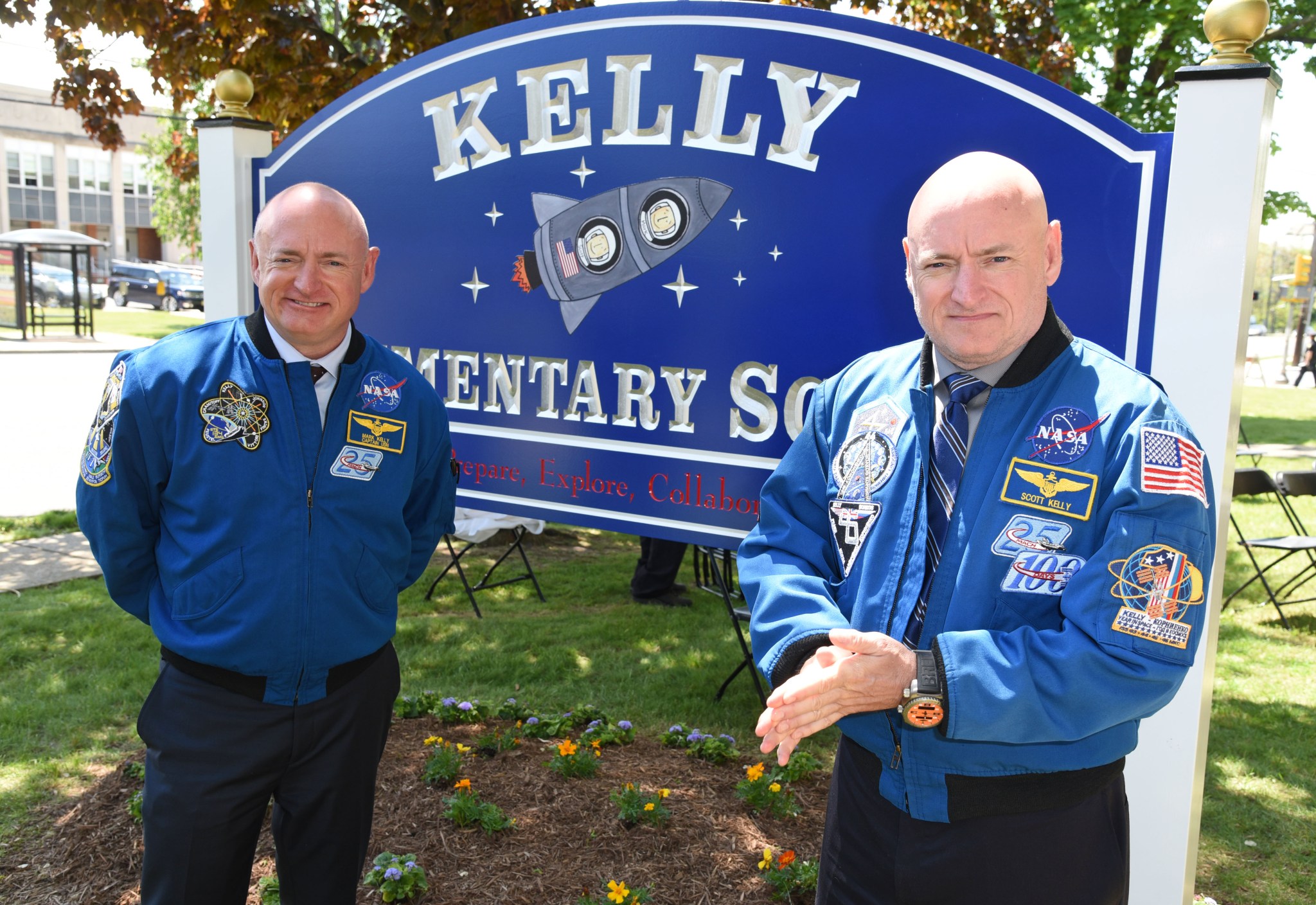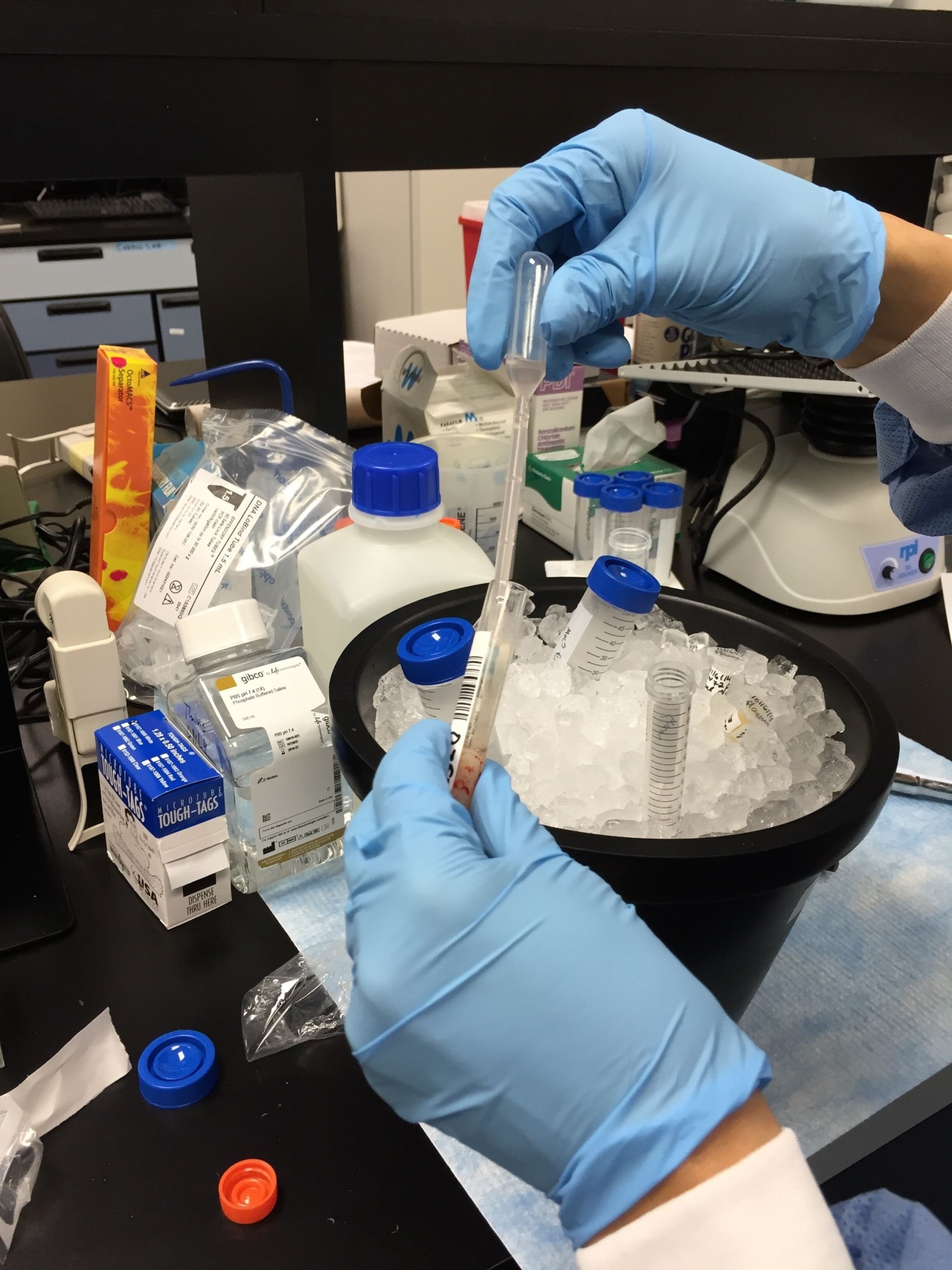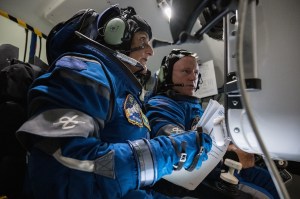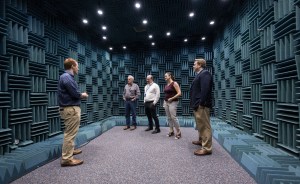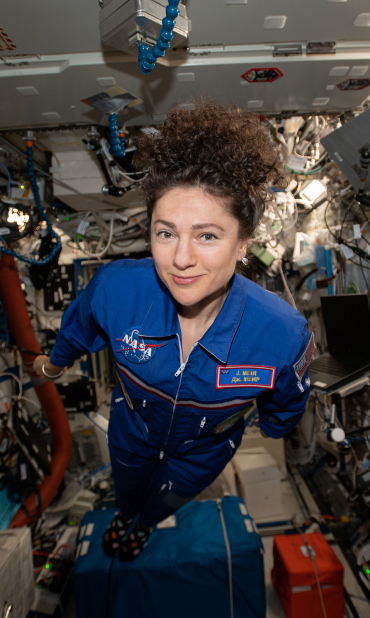Blood samples from astronaut Scott Kelly taken during his one year mission in space arrived in the lab of NASA’s Johnson Space Center in the wee hours of the morning when he returned to Houston on March 2, 2016. Francine Garrett-Bakelman, Ph.D., received these samples, as well as fresh blood samples from Scott ten minutes later, and was ready to process them as part of NASA’s Twin Study to compare Scott to his identical twin brother, Mark Kelly.
“For the next six hours, I isolated the cells and prepared them for shipment to the different Twins Study laboratories,” said Garrett-Bakelman. “The following day I returned to process blood specimens from Scott’s twin brother, who remained on Earth during Scott’s mission.”
Blood collections for NASA’s Twins Study began weeks before astronaut Scott Kelly launched on his one-year mission aboard the International Space Station. The research compared Scott in space to Mark on Earth before, during and after the historic mission. The study officially moved into the final stages of scientific research in April with the release of an integrated summary paper published in Science.
In total, 183 blood samples were taken from Scott and his twin brother, Mark, over the duration of NASA’s Twins Study. Garrett-Bakelman, a researcher at the University of Virginia School of Medicine, helped to establish protocols for in-space and on-Earth blood sample processing approaches and transportation, as well as assist firsthand in most of the on-Earth blood collections.
The Twin Study used unique methods of investigation. Ten research teams were brought together to examine twin astronauts on the genomic level, the physiological level and the behavioral level in one integrated study. This study may guide NASA’s Human Research Program investigations for years to come.
Chris Mason, Ph.D., received blood samples shipped from Garrett-Bakelman at Weill Cornell Medicine in New York. As team lead for the Gene Expression investigation, Mason explains the importance of the Twins Study this way:
“Even though the Twins Study is a sample size of two, an analogy of its importance is the Human Genome Project,” Mason said. “They sequenced the first one as well as they could at the time because they knew all subsequent ones will be compared to that. The same is true with the Twins Study.”
NASA is in the planning stages of sending several astronauts into space for additional one-year and varying duration missions. The data from these future missions will be compared to the Twins Study.
“With each set of mission results we will ask, how is this the same or different from the Twin Study results? How can we continue to measure and mitigate risks?” Mason said.
Tim Donahoe worked with the blood samples on Mason’s team in New York.
“We handled the material extracted from the blood that came back from the space station, which was really meaningful,” Donahoe said. “But I’d say my biggest role with the Twins Study was with background research. I summarized the known gene changes in space from data on NASA’s GeneLab database. I did a lot of the consulting on the meaning of the new data we obtained.”
Tejas Mishra, Ph.D., received samples for the Integrative Omics team at Stanford University in California. Mishra, from India, is one of about 15 Twins Study researchers born outside of the U.S. “It has been incredibly enlightening to be part of the Twins group,” she said. “I have a lot more insight into how NASA research works. Through my work with the Twins Study, I was invited to join the NASA GeneLab. It is such a unique research opportunity that you can only get in a few countries in the world.”
The blood samples did not have to travel far to get to Scott M. Smith’s lab. Located at Johnson, Smith is a Ph.D. and the manager of the Nutritional Biochemistry Lab and compared nutritional markers in Scott’s and Mark’s blood as part of the Biochemical research study. He believes the dynamics of Scott’s telomeres in space is the most unexpected finding of the Twins Study.
“This is not what we expected because you’d think the telomeres would get shorter under stress,” Smith said. “But his nutritional status improved during flight and his body mass went down, both of which correlate with his telomeres lengthening. That’s exciting but it’s also reality. Nutrition affects virtually every system in the body.”
A research team at Colorado State University in Fort Collins, also received blood samples from Garrett-Bakelman. Dr. Susan Bailey, Ph.D., studied Telomeres (the endcaps of chromosomes) and agrees with Smith. “The Twins Study put a very public face on telomeres. It proved once again that our best ideas are often wrong – which is the whole point of science. We have to actually do the experiments to test our hypotheses, and that is why human research in space is so important for all of us,” Bailey said.
The Twins Study inspired another genomics study involving twins. In 2016, two sets of twins participated in a very similar study at Mount Everest. One twin from each set climbed the tallest mountain in the world while the other twin from each set remained at the base. The climbing twins had the difficult task of drawing blood from each other in frigid temperatures and high elevation. Mason and his team also analyzed the blood from this study. “We know that time spent at high elevation will cause the body to produce more red blood cells to carry more oxygen,” he said. “What we don’t know is what’s happening at the detailed molecular level—which genes are activated specifically when you climb the world’s tallest mountain? It is as close to space as you can get here on Earth.”
Detailed findings of the ten Twins Study investigation are published in a special edition of Science which is available in print and online. Companion papers from the individual research teams will be published intermittently over the next year.
Marisa Covington, Ph.D., the NASA Twins Study Coordinator, notes there are more up-to-date methods for handling blood samples, but “because of constraints presented by spaceflight, we were not able to use these more modern blood collection techniques”.
Garrett-Bakelman is eager to see how NASA’s in-depth look at the blood she helped to collect and distribute in the Twins Study may frame future research. “The Twins Study is unique in that it represents the first comprehensive study of an astronaut on a longer-duration space travel mission that included a genetically matched control,” she said. “A roadmap has now been established, and I hope it will be used to implement even more sophisticated and insightful studies of astronauts in the future.”
_____
NASA’s Human Research Program, or HRP, pursues the best methods and technologies to support safe, productive human space travel. Through science conducted in laboratories, ground-based analogs, and the International Space Station, HRP scrutinizes how spaceflight affects human bodies and behaviors. Such research drives HRP’s quest to innovate ways that keep astronauts healthy and mission-ready as space travel expands to the Moon, Mars, and beyond.



























